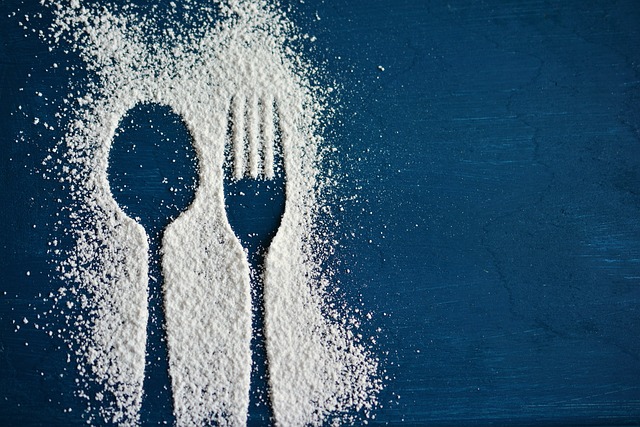
Even though many of us associate stress with eating more (i.e. overeating), research has shown that we differ in the dietary response to stress1: Some of us eat more, some eat less, while others show no change. Predicting who falls into which group is, however, very difficult, and research findings have been inconclusive. In our recent study, we found that situational factors might play a bigger role than stable individual factors, such as age, gender and BMI, in determining how stress changes our eating behaviour.
Who of us eats more when feeling stressed?
Knowing who is at risk for stress-induced eating can help develop tailored measures for the prevention and treatment of overweight and obesity. Therefore, a large number of studies have tried to identify person-characteristics that can predict whether someone is likely to engage in stress-induced eating. They have, for instance, studied questions like: “Are women at higher risk for stress-eating than men?” or “Do individuals with higher body weight eat more when stressed compared to those with lower body weight?”. However, results from these studies have been highly inconsistent. For instance, some studies found that stressed men ate less, while some women ate more when feeling stressed2. In contrast, other studies found no gender differences3.
The authors of a recent meta-analysis4 conclude that most studies assessing the relationship between stress and food intake only captured certain aspects of food intake (e.g. snack food intake) or studied food intake in an artificial environment (e.g. in the laboratory). Yet, knowing which individuals engage in stress-induced eating in the laboratory might not tell us who engages in stress-induced eating in daily life. Therefore, we wanted to study which individuals eat more when feeling stressed in the real world. To do so, our participants recorded their food intake and stress levels over three days in daily life using the APPetite-mobile-app5.
The results of our study are now published online6. We found that only gender was related to the amount of food intake during stress: men decreased food intake when feeling stressed, while women showed no change. Interestingly, other individual factors such as BMI, age, eating style and the self-reported tendency to eat more, less or the same in response to stress were not related to how much an individual ate when feeling stressed.
More importantly, our results indicate that we might not always show the same dietary response to stress. This suggests that time-varying factors (i.e. factors that are specific to a certain situation) might influence whether we eat more, less or the same in response to stress. This is in line with another study7 which found that when food was easily available people were more likely to consume snacks when feeling stressed. This finding might not be surprising, but highlights that we do not only have to identify individuals at risk for stress-induced eating, but also situations in which individuals are more likely to engage in stress-eating.
All in all, our study has shown that mobile apps can really help to gain novel insights into factors that influence the relationship between stress and eating in daily life. Such studies can help us predict and prevent overeating.
Further reading
Read our previous blog about this study here.
Read the full research publication of our study here.
References
1 Greeno, C. G., & Wing, R. R. (1994). Stress-induced eating. Psychological Bulletin, 115(3), 444–464. https://doi.org/10.1037/0033-2909.115.3.444
2 Grunberg, N. E., & Straub, R. O. (1992). The role of gender and taste class in the effects of stress on eating. Health Psychology, 11(2), 97–100. https://doi.org/10.1037/0278-6133.11.2.97
3 Conner, M., Fitter, M., & Fletcher, W. (1999). Stress and snacking: A diary study of daily hassles and between-meal snacking. Psychology & Health, 14(1), 51–63. https://doi.org/10.1080/08870449908407313
4 Hill, D., Conner, M., Clancy, F., Moss, R., Wilding, S., Bristow, M., & O’Connor, D. B. (2021). Stress and eating behaviours in healthy adults: a systematic review and meta-analysis. Health Psychology Review, 1–25. https://doi.org/10.1080/17437199.2021.1923406
5 Ruf, A., Koch, E. D., Ebner-Priemer, U., Knopf, M., Reif, A., & Matura, S. (2021). Studying Microtemporal, Within-Person Processes of Diet, Physical Activity, and Related Factors Using the APPetite-Mobile-App: Feasibility, Usability, and Validation Study. Journal of Medical Internet Research, 23(7):e25850. http://dx.doi.org/10.2196/25850
6 Ruf, A., Neubauer, A. B., Koch, E. D., Ebner-Priemer, U., Reif, A., & Matura, S. (2022). Individual differences in the dietary response to stress in ecological momentary assessment: Does the individual-difference model need expansion? Applied Psychology: Health And Well-Being, 1–21. https://doi.org/10.1111/aphw.12400
7 Zenk, S. N., Horoi, I., McDonald, A., Corte, C., Riley, B., & Odoms-Young, A. M. (2014). Ecological momentary assessment of environmental and personal factors and snack food intake in African American women. Appetite, 83, 333–341. https://doi.org/10.1016/j.appet.2014.09.008
